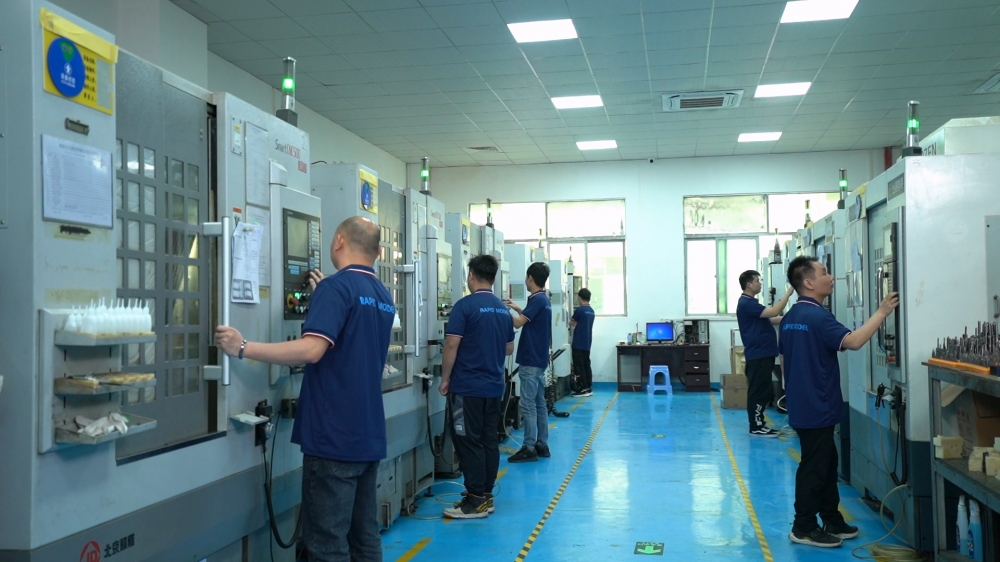In the new product development process, prototype manufacturing is a pivotal stage that bridges design and mass production. Its success directly determines the feasibility assessment of the design and the confidence to proceed with tooling and production. Choosing the right prototype manufacturer is not simply a matter of comparing prices—it is a strategic decision that significantly impacts both efficiency and cost in product development.
Below are the key considerations worth careful evaluation:
1. Price
Cost control is undoubtedly important, but chasing the lowest price often hides significant risks.
A real-world case:
A client needed high-quality prototypes urgently to showcase at a major industry trade show. To cut costs, they chose a manufacturer with an extremely attractive price. The result? The factory failed to deliver in time for the show. The client lost valuable exposure and business opportunities, and all the upfront expenses for booth rental, travel, and accommodation were wasted.
This case confirms the old saying: "Good quality is not cheap, and cheap quality is not good." When choosing a prototype manufacturer, the goal should be the optimal balance between price, value, quality, and reliability—not simply the lowest number. Paying a reasonable premium is, in fact, an investment in risk reduction and project success.
2. Quality
The core mission of a prototype is to accurately verify design and functionality. Poor-quality prototypes can have serious consequences:
Misleading design validation: Dimensional deviations, poor assembly fit, or incorrect material properties can cause the design team to make wrong judgments about feasibility, wasting valuable development time.
Endangering tooling safety: Prototypes serve as the blueprint for mold manufacturing. Hidden structural flaws or unnoticed data errors in the prototype can lead to costly mold failures. Once a mold is scrapped or requires major rework, the losses far exceed any initial savings on prototype costs.
In short—cutting corners on prototypes can lead to exponentially higher costs in tooling.
3. Lead Time
New product launches often face strict time windows. When you have an urgent prototype need—sometimes within just a few days—the manufacturer’s actual capacity and project management capabilities become critical.
Risks with small workshops or pure trading companies:
- Limited equipment (or full reliance on outsourcing)
- Overloaded capacity during peak demand
- Little to no control over delivery times for complex or urgent orders
Value of in-house, scalable capacity:
Choose manufacturers with:
- A full range of in-house high-precision CNC machines, SLA/DLP resin printers, and SLS sintering equipment
- Established production processes
- Dedicated coordination teams
Scale itself becomes a safeguard for on-time delivery, even under tight deadlines.
4. Company Qualifications, Scale, Technology, and Equipment
The combined “software” and “hardware” capabilities of a factory are the foundation for smooth project execution.
- Certifications: Check for essential industry certifications (e.g., ISO quality management systems) as they reflect standardized processes and a commitment to quality.
- Scale and capacity alignment: A small shop with just a few outdated machines and no certification is unlikely to handle complex or large-scale orders. Outsourcing to third parties often follows, which leads to:
- Slower communication
- Loss of quality control
- Serious risks of leaking sensitive designs and trade secrets
- Technical team and core equipment:
- Skilled engineers are key to solving complex process challenges and optimizing manufacturing solutions.
- Continuous investment in advanced equipment—such as 5-axis CNC machines for complex surfaces, high-precision 3D printers for intricate structures, and professional finishing lines for perfect surface quality—directly determines technical capability and product consistency.
Rapid Model’s Perspective
Choosing a prototype manufacturer means choosing a critical partner in your product development journey. Avoid the short-sighted “price-only” mindset. Instead, build a systematic evaluation framework—balancing:
- Price reasonableness
- Proven quality control track record
- Real delivery capabilities under time pressure
- Company qualifications, technical expertise, and equipment strength
Only by doing so can you minimize risks, ensure the prototype stage delivers its maximum value, and lay a solid foundation for final product success. Every careful choice is a step toward protecting your project’s future and maximizing your valuable R&D resources.



